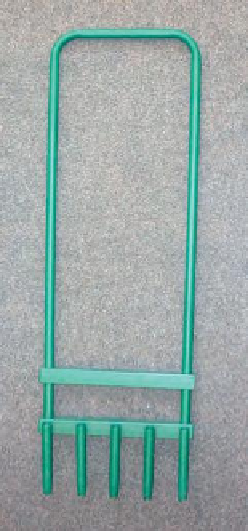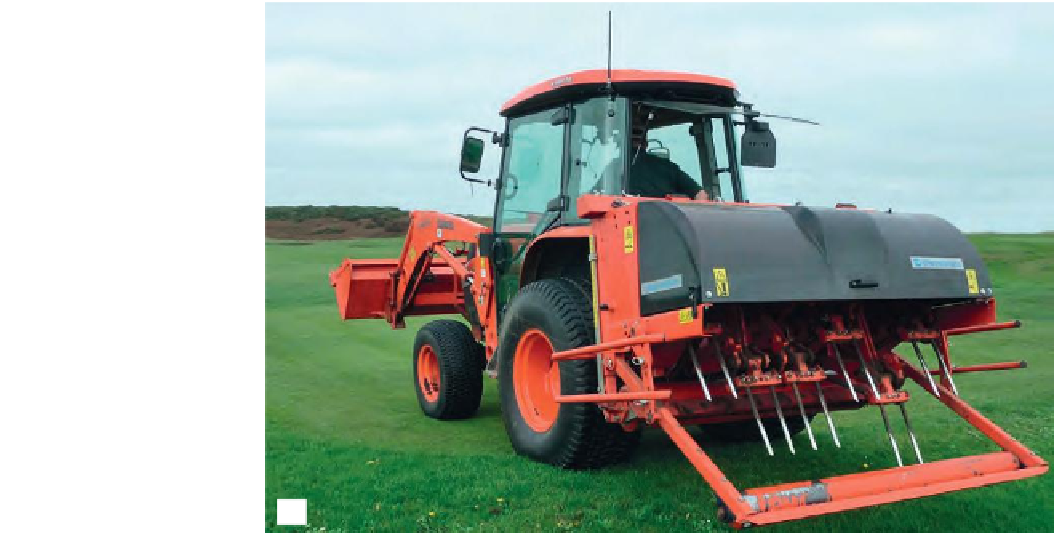Agriculture Reference
In-Depth Information
12
(a)
(b)
Figure 12.9
Aeration of turf: (a) by hand with a simple corer; (b) removing cores with machinery
for most crops. This can be hard work, especially on
heavy soils, so the choice of equipment is important
and the blade should be kept sharp. Smaller and
lighter versions of the normal-sized spades (even
children's size) are readily available. Double digging is
undertaken when a deeper rooting depth is required
for long root vegetables or to eliminate a known deep-
lying soil structure problem. Again, care is needed
to make sure subsoil is not brought into the topsoil
horizon. Traditionally this involved the inversion and
loosening of two spade depths with the lower subsoil
spit being returned to the subsoil zone.
Raking
Raking is used on roughly prepared ground for
removing stones and debris, producing a suitable tilth,
incorporating fertilizers and leveling.
There are many types of rake available and suitable
ones for cultivating should be selected and used
appropriately - for example, if levelling is the prime
requirement, then a wide one should be considered.
The traditional rake is used in two main ways:
X
as a means of reducing soil aggregates to the size
of the crumbs required for the seedbed. For this
the rake should be kept low to the ground with
soil pushed back as much as forward. The impact
of the tines breaks the clods, which is made
much easier if the soil is in a friable condition (see
p. 150). Weathering over the winter helps the
working of heavier soils.
X
as a means of removing stones and unwanted
vegetation when the rake is acting as a sieve. For
this the rake should be pulled through the seedbed
held at 45°
and in one direction leaving the soil
crumbs behind.
If load-bearing is poor, then planks should be used to
avoid compaction on the loose soil.
Forking
Forking can be adopted where loosening or breaking
up the soil is the major requirement, but when the
burying of weeds and trash is not a priority. It does
have the advantage of reduced soil inversion and
consequently is less arduous. A fork is often used
instead of a spade in a modified 'double digging' in
which the top spit is inverted by the spade, but the
second spit is loosened by forking.
Forks can also be used to improve the structure of
soil that cannot be dug over, such as established
flower beds, taking care not to damage shallow
feeding roots. The fork can be pushed into the turf
to improve aeration and the infiltration of water. An
improvement on this is the hand-held hollow tine,
which is pushed into the ground to extract a 10 cm
core of soil (Figure 12.9); pedestrian-powered versions
are available for dealing with larger areas.
Rotary cultivating
Rotary cultivators are used to create soil crumbs on
uncultivated or roughly prepared ground instead of
digging, forking and raking. Small pedestrian types are
available for use in gardens and on allotments; there



